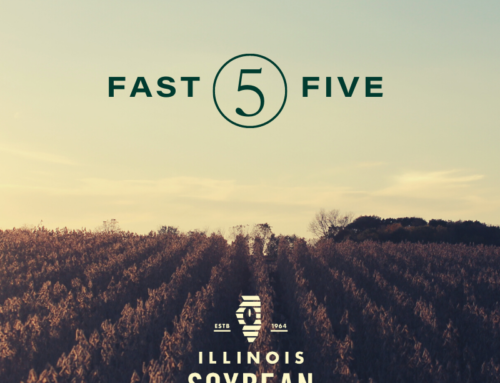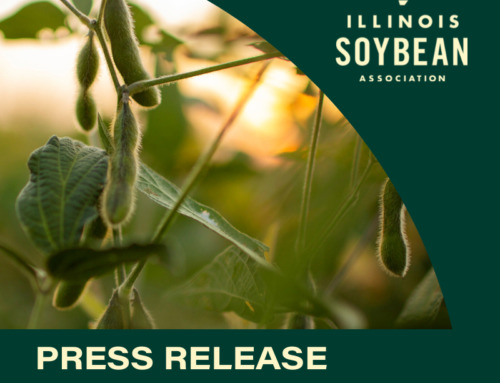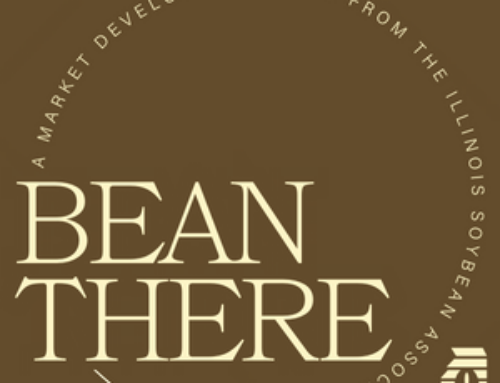The Illinois Soybean Association (ISA) leverages relationships with external organizations to diversify our markets and enhance the value of soybeans. Illinois soybean farmers’ profit potential stands to grow as the demand for U.S. meat and poultry exports increases. Growing poultry and egg exports reflect the profitability of soybeans, as poultry is the largest soy consumer, accounting for 61% of production, using about 1.1 billion bushels of soy annually. Without poultry and egg production, U.S. soybean prices would decrease by 65%, all other things being equal. Likewise, U.S. pork exports significantly contribute to the value of Illinois soybeans. In 2024, pork exports accounted for 15.87 million bushels of Illinois soybean consumption valued at $176.39 million and contributed to 13.2% of the value of soybeans per bushel.
The U.S.A. Poultry and Egg Export Council (USAPEEC) and U.S. Meat Export Federation (USMEF) are driving forces behind market access and market development. Both with headquarters in the U.S. and multiple regional offices worldwide, their work is continuously reaching new consumers and growing poultry and red meat exports, respectively, to unprecedented levels.
Spring meetings bring new ideas to light while evaluating the results of past projects. Each year, trade organizations develop a Unified Export Strategy (UES) to advance work through the Foreign Agriculture Service (FAS) with market development and export promotion programs. Industry professionals, checkoff organizations and various stakeholders gather to share their input on future investments to expand meat exports.
Halfway through fiscal year 2025, the Market Development department evaluates the status of its project portfolio to make informed decisions for the next funding cycle. Attending these UES meetings provides the opportunity to speak directly with the regional directors spearheading joint projects with USMEF (Mexico) and USAPEEC (Mexico, India, and Philippines). Together, these investments have shown measurable ROI with an 8-15% increase in pork sales following promotional activities, more than 60 professionals trained in poultry handling techniques and numerous recipe developments.
ISA’s relationship with both entities span decades. Specifically, ISA has maintained critical funding in Mexico over the last 25 years, which can be directly linked to the country doubling pork consumption in that time. Similarly, projects with USAPEEC have reached multiple continents with programming to increase market share, strengthen demand for poultry and eggs and educate industry professionals.
Each meeting that brings these groups together sparks new ideas, debate and the start of new relationships. With many changes coming down the pipeline in 2025, we lean heavily on these relationships to reach desirable outcomes for the farmers of Illinois that ISA represents. Non-tariff trade barriers threaten poultry, egg and pork exports, with issues like foreign animal disease, regulatory red tape and low-cost competitors threatening to take hold of U.S. market share.
USAPEEC focuses a significant amount of time on Highly Pathogenic Avian Influenza (HPAI), which has depopulated more than 166 million birds since 2022 and has taken out 20-25% of the egg layer population each year. Not only does this lead to hikes in egg prices here at home, but it also limits the supply for export. Further, the possible implementation of a vaccine could exacerbate export bans overseas. Long story short, there is no perfect solution to HPAI, but their collaboration with producers in the U.S., as well as importers worldwide, can help reduce the impacts of the disease while improving trade relationships for sustained exports of U.S. poultry and egg products.
On the side of livestock production, USMEF holds an optimistic outlook for beef and pork exports worldwide despite looming concerns with tariffs. As spending power increases, people want more protein in their diets. Programming in 20 regions outside the U.S. positions the quality of American pork as a priority for consumers to secure demand regardless of price.
2025 will be known as a year of change in export markets, but ISA maintains a diverse portfolio in markets big and small to protect the value of soybeans. Work with partners in value-added industries like pork and poultry brings new ideas to light and develops markets to benefit Illinois farmers.


